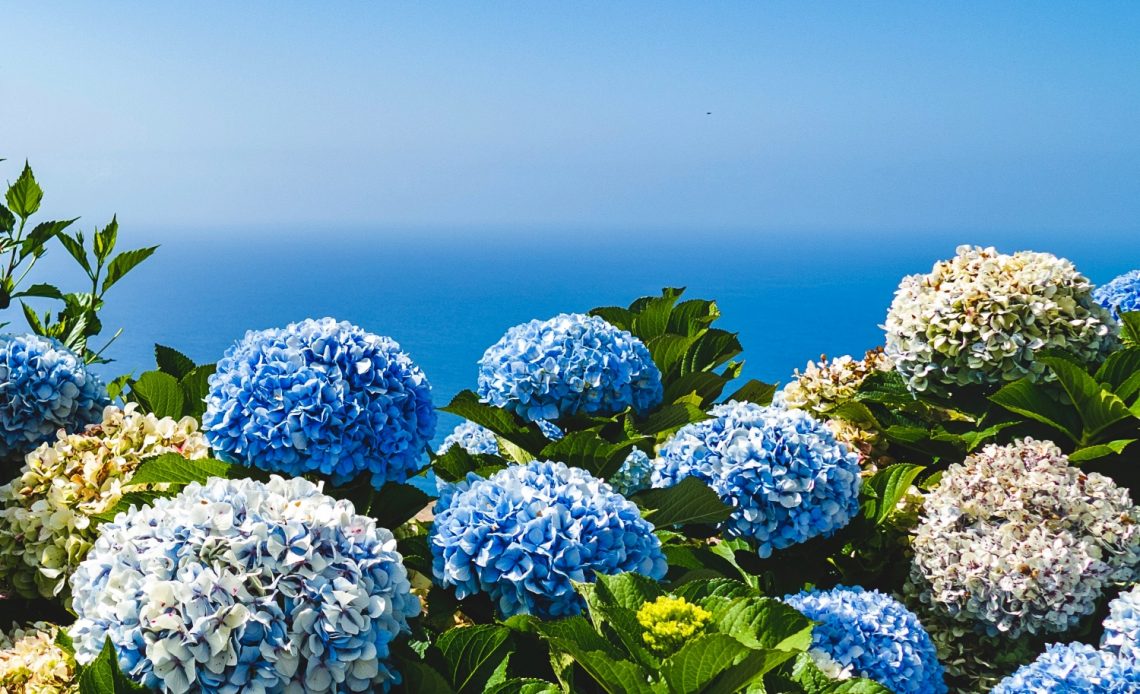

We’re here to help! Wild Yards is a completely free website that is 100% dedicated to helping you create a wildlife-friendly, sustainable yard. Read more
WildYards is reader-supported. When you buy a product through a link on our site, we may earn a comission. Every product is independently selected by our (obsessive) editors and our reviews are unbiased and objective. Read more about our mission or our privacy policy.
Hydrangeas are as beautiful as they are versatile. They can be used to create a backdrop for your flower beds, they can be planted in a row to create an informal hedge, and they can be grown in pots to accent your front porch or back patio. With their colorful, showy flower heads, it’s little wonder these flowers are such a hit with gardeners. But they can run into their fair share of problems. If your hydrangea leaves are turning yellow, that’s a sign that something is up. But what could be causing the change in color, and what can you do to make the leaves turn green again?
Hydrangea leaves typically turn yellow when the plant is suffering from a nutritional deficiency. However, insect infestations, fungal diseases, and less-than-favorable soil conditions can also contribute to discolored foliage.
10 Reasons why your hydrangea leaves are turning yellow, plus solutions that actually work
Seeing yellow leaves on your hydrangeas is cause for alarm. The sooner you determine what’s going on, the sooner you’ll be able to implement a strategy to restore the plant’s health. Here are 10 reasons why hydrangeas suffer from yellow leaves, as well as 10 solutions that are guaranteed to work.
The problem: nutritional deficiencies
If your hydrangea’s leaves have turned yellow during or shortly after the blooming period, that’s a major sign that it’s suffering from a nutritional deficiency. Hydrangeas are heavy feeders, especially when they’re in bloom. They’re also somewhat dramatic — if something isn’t right about their growing conditions, they’ll let you know pretty quickly! If your hydrangea’s leaves are turning yellow, examine them closely to see if they’re suffering from one of the following mineral deficiencies.
- Iron deficiency — also called iron chlorosis, low iron levels cause the hydrangea’s leaves to turn yellow while their veins remain green. Typically, newer leaves are the first to be affected.
- Nitrogen deficiency — when nitrogen levels are low, plants develop a yellow cast overall. They also suffer from stunted growth.
- Magnesium deficiency — as with iron deficiency, when magnesium levels are low, leaves turn yellow while the veins remain green.
It’s not impossible for hydrangeas to struggle with multiple mineral imbalances at one time. This is why it’s important to examine your hydrangea’s foliage regularly, particularly during the flowering season, so you can address nutrient deficiencies before the plant’s health declines significantly.
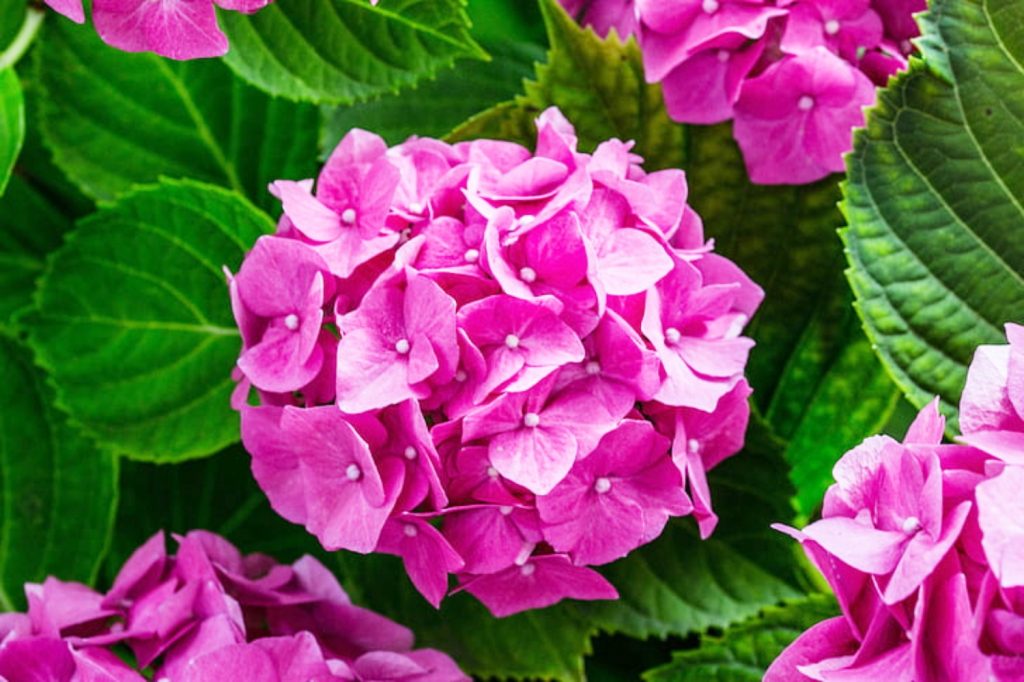
The solution: fertilize appropriately
If your hydrangea is showing signs of low mineral levels, the first thing you need to do is test the soil. Knowing exactly how much of which minerals are in the soil will help you fertilize the plant appropriately.
- Iron deficiency — blood meal is an excellent all-natural source of iron that your hydrangeas will benefit from. But a chelated iron fertilizer will work better for extreme deficiencies.
- Nitrogen deficiency — compost, manure, and blood meal are all rich in nitrogen, making them an excellent choice for your nitrogen-deficient hydrangeas. You can also use old coffee grounds.
- Magnesium deficiency — if your hydrangeas are suffering from low magnesium, then try Epsom salts. Add 2 tablespoons of Epsom salts to a gallon of water, and use the solution to feed your plants.
Once you’ve corrected any underlying nutritional deficiencies, your hydrangeas should perk up within a week or so. Be sure to test your soil again in 4 to 6 weeks to determine whether or not you’ll need to reapply. Once the minerals in your soil have been stabilized, use balanced, slow-release fertilizer, like 10-10-10 or 12-12-12, to feed your hydrangeas.
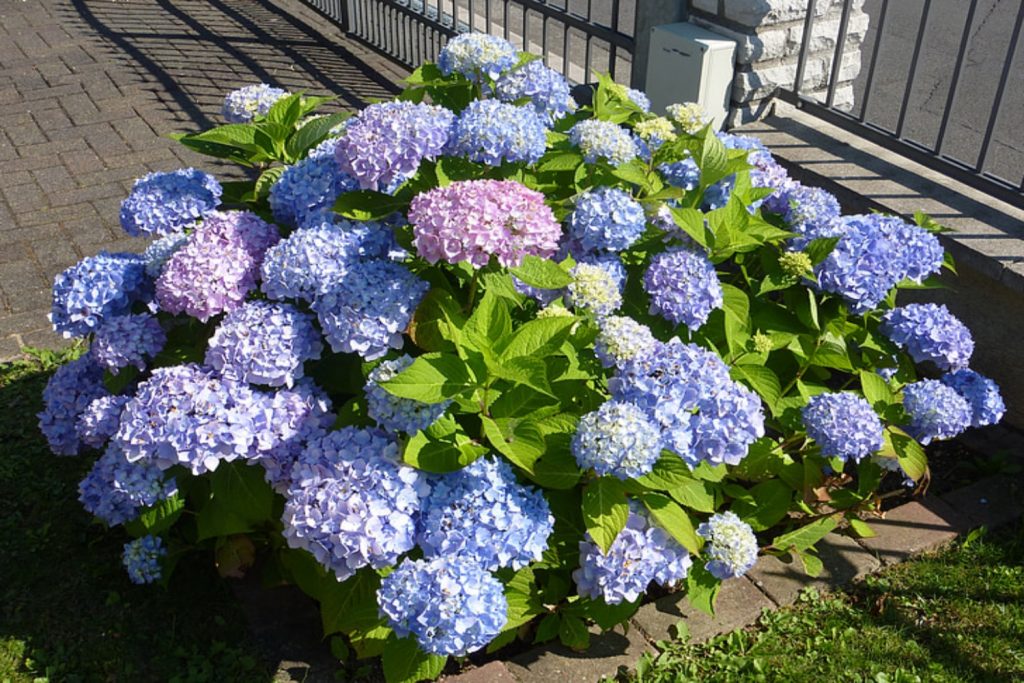
The problem: wrong soil pH
Hydrangeas are highly sensitive to soil pH. In fact, they’re so sensitive to it that it can change the color of their flowers. When the soil is acidic, at a range of 5.0 to 5.5, hydrangeas produce blue flowers. At 5.5 to 6.0, the flowers begin to turn varying shades of purple. And from 7.0 up, the alkalinity turns hydrangeas pink and red. If your hydrangea’s soil isn’t where it would like to be, then its flowers may change colors, and it may develop yellow leaves, too.
The solution: amend the soil
Hydrangeas that have been hybridized to produce flowers of a certain color should be kept in soil with the appropriate pH range. For instance, if you’re growing ‘Red Sensation’ hydrangeas, then you’ll need to make sure the soil stays slightly alkaline. If the pH becomes too acidic, not only will the color of the blooms fade, but the leaves may turn yellow as well. If your soil is too acidic, use baking soda, compost, or wood ash to bring the pH up a bit. Meanwhile, peat moss and garden sulfur can be used to make the soil more acidic. Once you’ve corrected the soil’s pH, this will make it easier for your hydrangea to utilize the nutrients that are in the soil, and its leaves will become green again.
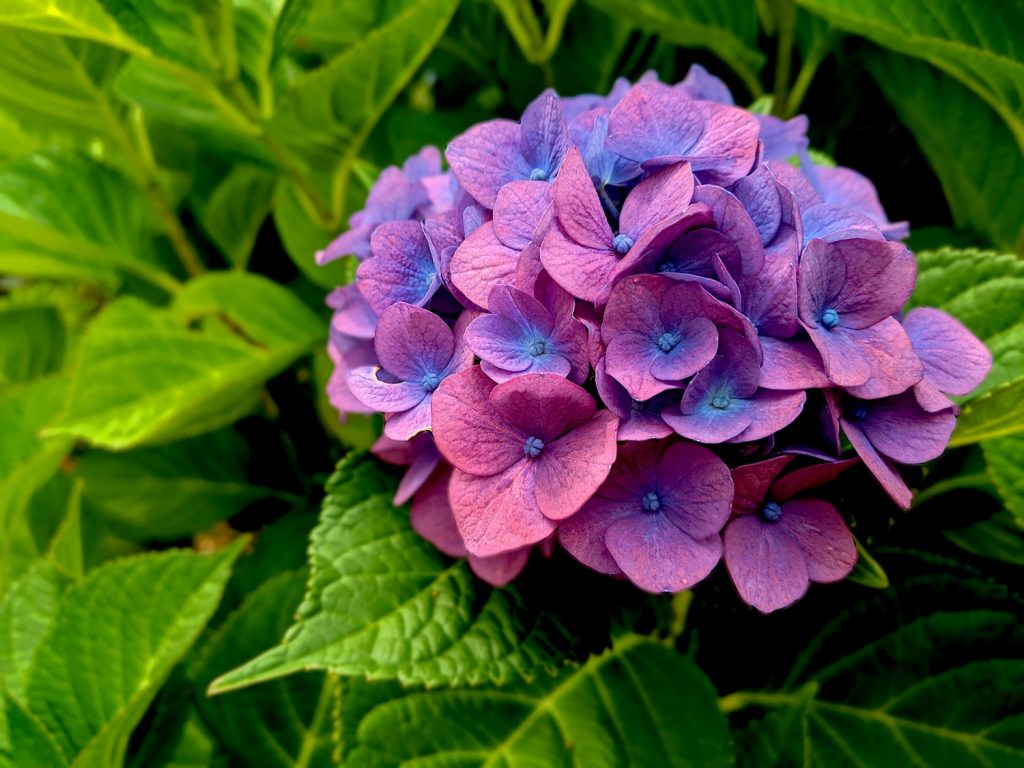
The problem: overwatering
Hydrangeas grow best in loose, loamy soil that can easily be kept moist, but that allows excess water to run off quickly. If the soil becomes soggy, either because of an increase in rainfall or because of poor drainage, this can temporarily alter the pH of the soil leading to iron chlorosis. Stick your finger 3 inches into the soil. If the ground feels overly damp, or if you can see water standing nearby, then your hydrangeas are probably overhydrated.
The solution: turn off the hose
If your hydrangeas have been overwatered, then allow the soil to dry out more in between watering. Giving the roots some air will rebalance the soil’s pH and green up the plant’s leaves. If your hydrangeas have been the victim of too much rainfall, then consider taking steps to improve drainage. Dig a small ditch to allow standing water to run off if necessary. And amend the soil with coarse sand or pea gravel. This will help break up the compacted ground making it much easier for your hydrangea’s roots to breathe.
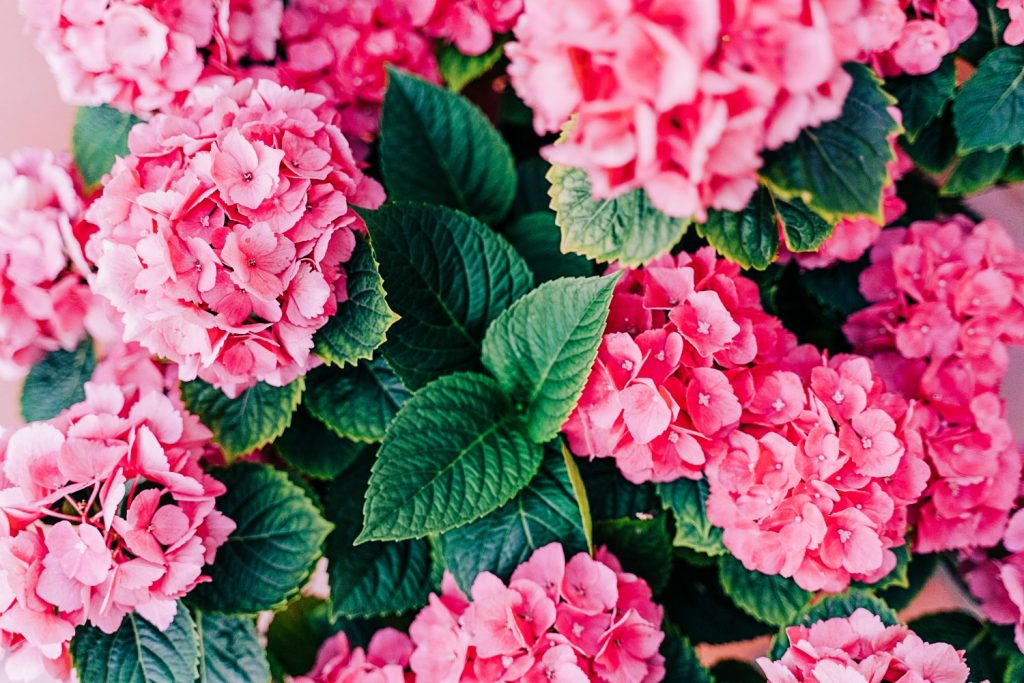
The problem: underwatering
Too much water can do a lot of damage to your hydrangeas, but they won’t benefit from underwatering, either. If your hydrangeas are struggling with insufficient water intake, their leaves will soon turn yellow before turning brown and dying off. Check the soil 3 inches below the surface, and if it feels powdery and dry, then your hydrangeas probably need some water.
The solution: give the plants a drink
When planted in ideal conditions and in the correct type of soil, hydrangeas should be watered three times a week. Deep watering is preferred, as this gets to the plant’s longest roots. During droughts, be sure to check your hydrangea every day and water them more often. If your hydrangea is planted in overly sandy soil that just won’t hold water, then either transplant the shrub to a better location or amend the soil with compost and general-purpose potting soil.
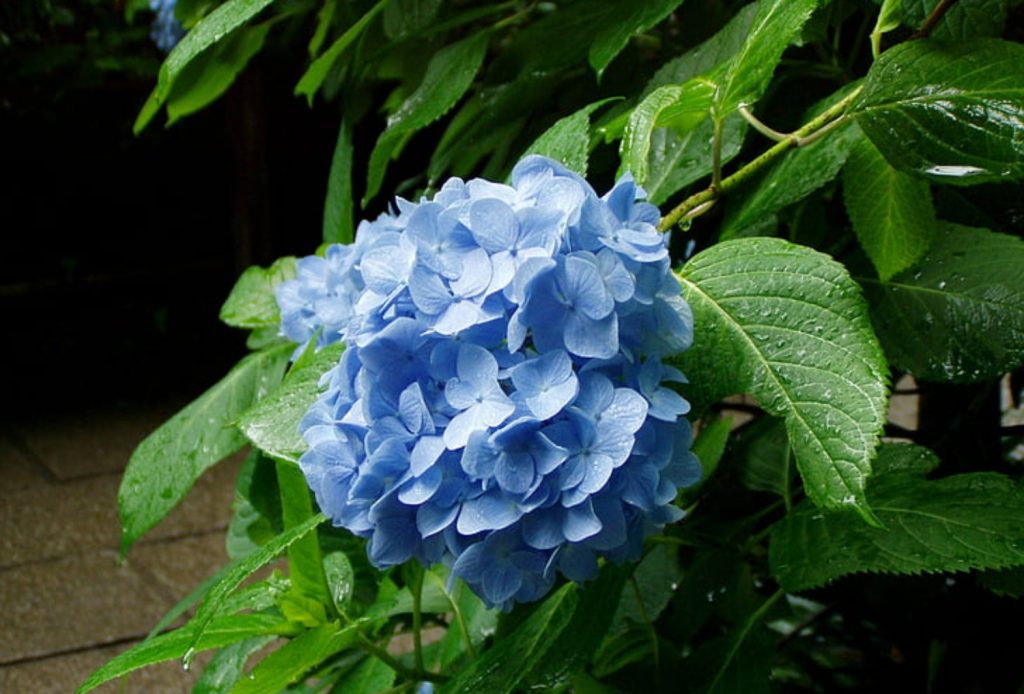
The problem: insect infestation
Hydrangeas can fall prey to a number of insects, including aphids, spider mites, whiteflies, beetles, and slugs. As these tiny pests feast on the plant’s foliage, the leaves sustain more and more damage, and that can cause them to turn yellow. If bugs are in fact the underlying cause of your hydrangea’s yellowing foliage, then you’ll probably also see chunks missing from the leaves’ edges. Inspect the plant carefully, particularly the undersides of the leaves. If you find lots of creepy crawlies lurking around, there’s a good chance they’re to blame for your hydrangea’s worsening appearance.
The solution: insecticide
Left unchecked, an insect infestation can kill your hydrangea. So be proactive and use one of our 9 homemade insecticide recipes to repel the damaging bugs. You can also try hosing down the foliage. Use a garden sprayer on a “jet” setting to physically repel the insects. Scrub the leaves gently in between your fingers to break up any eggs that may be hiding. If you choose to hose down your hydrangea to try to eliminate your bug problem, be sure to do so in the morning. Allowing water to sit on the foliage overnight promotes the development of powdery mildew, a common plant disease. And, speaking of diseases…
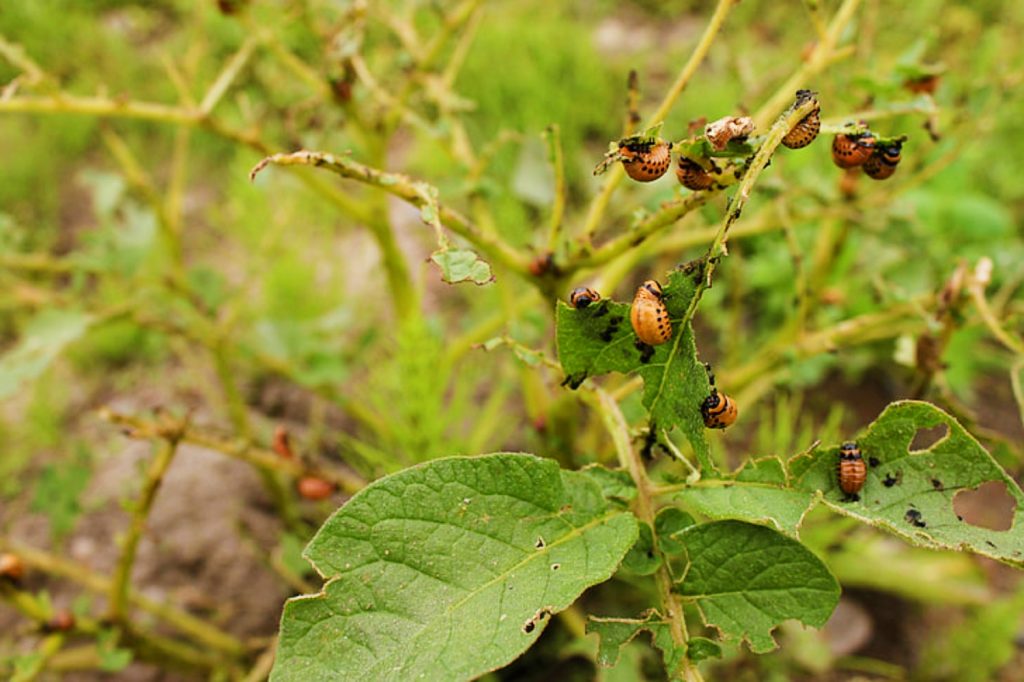
The problem: diseases
If you notice your hydrangea leaves turning yellow, it could be sick. Fungal infections and viral diseases can turn the hydrangea’s beautiful forest green leaves to a sickly yellow. Here are three of the most common diseases that hydrangeas can suffer from.
- Root rot — if your hydrangea has been sitting in water for too long, it may have developed root rot. Symptoms include yellowing foliage, stunted growth, and wilting.
- Tomato ringspot virus — spread by nematodes, tomato ringspot causes hydrangea leaves to turn yellow and become distorted.
- Botrytis blight — this fungal infection results in black spots on the hydrangea’s foliage. Leaves may or may not turn yellow after the spots develop.
- Hydrangea mosaic virus — this disease causes the leaves of the hydrangea plant to develop mottled yellow spots, as though they were splattered with a paintbrush.
Determining which disease your hydrangea is suffering from is critical. This will help you treat the plant appropriately and restore its foliage to the proper color.
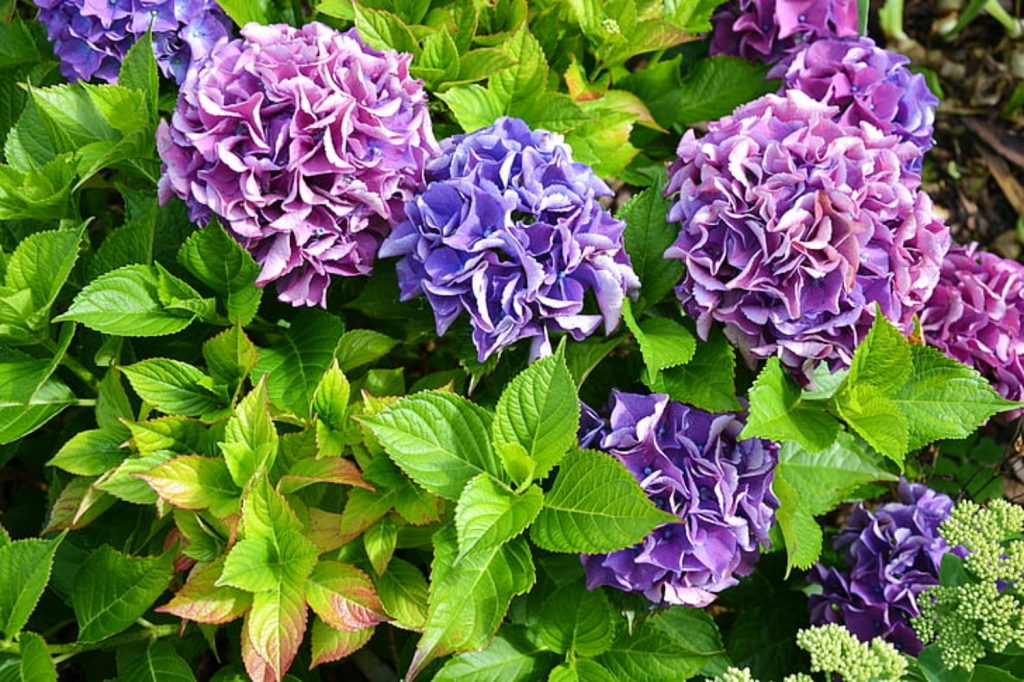
The solution: pruning and fungicide
Hydrangea mosaic virus may be unsightly, but it doesn’t require treatment. If you don’t like the way it looks, uproot the affected plant and replace it. Otherwise, it should continue to grow just fine, albeit at a somewhat slower pace. For tomato spot and botrytis blight, trim away heavily infected portions of the plant and spray the rest of the foliage down with a fungicide. Once the infection has been handled, the plant should grow out nice and healthy. Now, if root rot is the cause of the yellowing foliage, you’ll need to prune away the affected roots. Trim off mushy rotting roots and transplant the hydrangea to new soil. Consider keeping the plant in a pot with holes drilled in the bottom to maximize drainage. Be sure to disinfect your garden shears when you’re done pruning, and avoid planting another hydrangea in the old spot, to prevent the disease from spreading.
The problem: too much sunlight
Hydrangeas grow best when they get 4 to 6 hours of sunlight every day. They love the morning sun, and the dappled afternoon shade protects them from the hottest part of the day. If your hydrangeas are spending 7 or more hours in direct sun, it’s little wonder their leaves are turning yellow. They’re getting too much light! Hydrangeas are delicate flowers. And even though they love getting plenty of sunlight, too much of a good thing can spoil their appearance.
The solution: transplant to a shadier spot
Find a spot in your yard that can give your hydrangeas a bit more shade. Since hydrangeas like morning sun best, try sticking them on the east side of your house or a large shade tree. That way, they’ll get all the light they need, and be out of the sun during the hottest part of the day. If your hydrangeas are in pots, then simply move them onto your porch in the afternoon to cool them down.
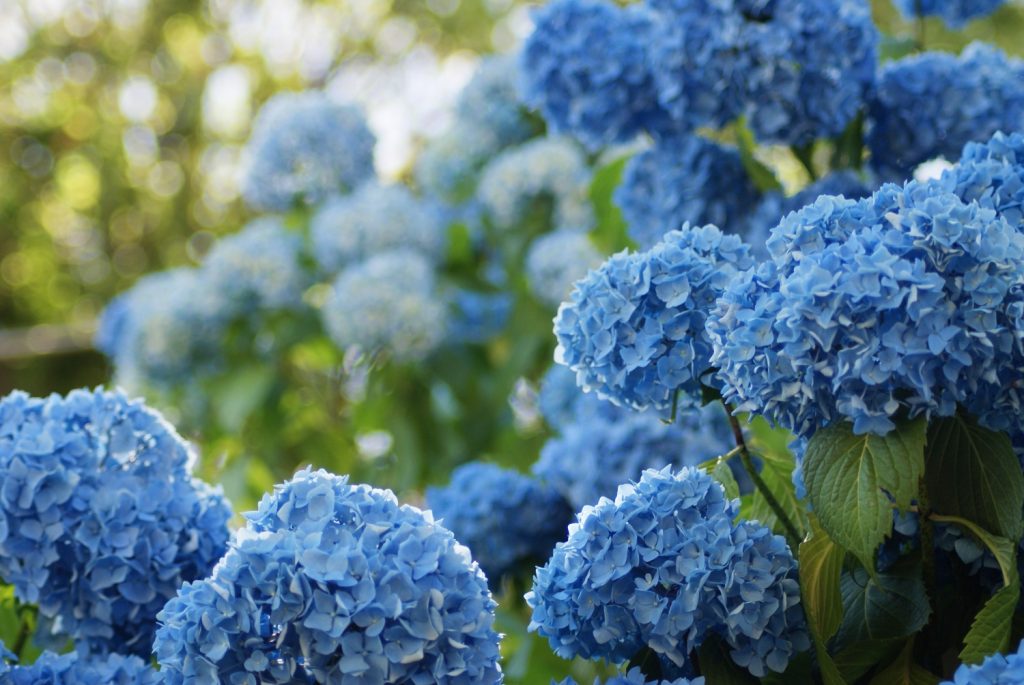
The problem: too little sunlight
When hydrangeas don’t get enough sunlight, then they don’t produce enough energy. The result is yellowing foliage and stunted growth. Observe your hydrangea’s location. Does it stay sunny for 4 to 6 hours, or does it spend most of the time in the shade? If your hydrangea isn’t getting enough sunlight, then it will be physically incapable of producing the deep green foliage that’s characteristic of these plants.
The solution: transplant to a sunnier location
Potted hydrangeas are easy enough to move. But if your hydrangea is planted in the ground, you’ll need to transplant it to another spot in order to give it more sunlight. Follow our guide to transplanting to ensure success. Once your hydrangea has been moved, it should sprout new green leaves as soon as it gets established.
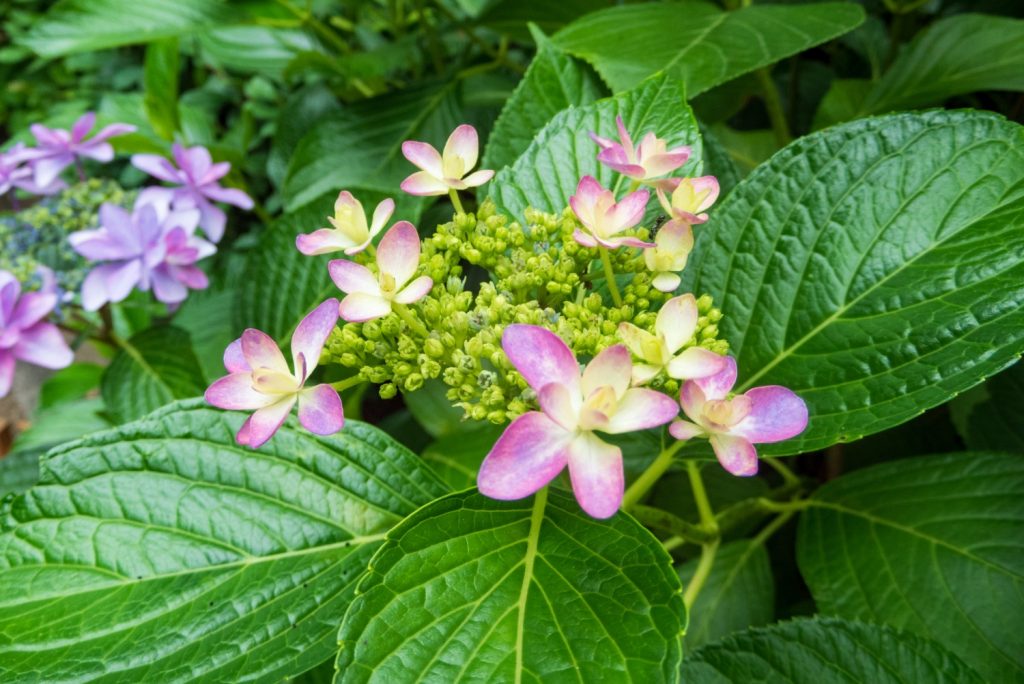
The problem: cold temperatures
Hydrangeas don’t like abrupt changes in temperature. Unfortunately, weather can be unpredictable, and sometimes all we can do is try to mitigate its effects. If you live in a cooler climate and the mercury suddenly drops, that can have a significant impact on your hydrangea’s foliage. It’s not at all uncommon to see a hydrangea develop yellow leaves in response to a cold snap. So, if your hydrangeas are having a meltdown because of the cold weather, what can you do to help?
The solution: warm things up
If the cold weather is getting to your hydrangeas, try to warm them up. Move potted plants into the sunlight and make sure they stay there for 6 hours. Cover hydrangeas that are growing in the ground with old sheets or packing blankets when the temperatures dip even lower overnight. And consider spreading black landscape fabric around the base of the plants to soak in the sun’s warming rays. Remember to water your hydrangeas regularly, even when it gets cold because it’s much easier for damp soil to stay warm than dry soil.
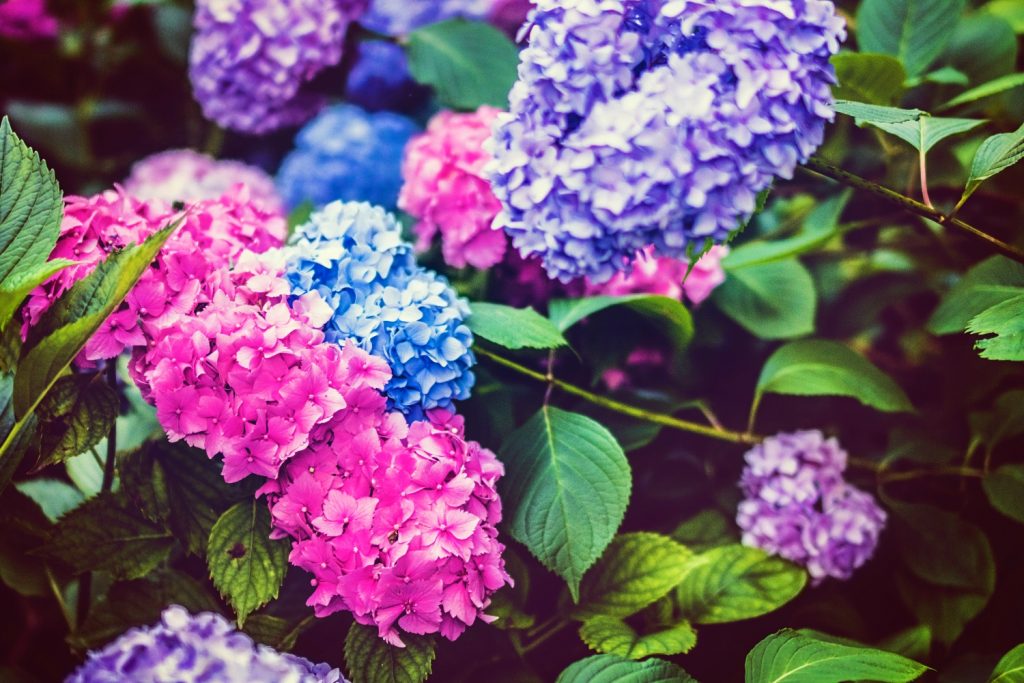
The problem: improper pruning
Hydrangeas that have been over-pruned or pruned at the wrong time may respond by developing yellow leaves. Young hydrangeas should be allowed to grow for several seasons completely uninhibited before being shaped and trimmed. And plants should never be pruned in summer as this is most hydrangea’s blooming period. Aggressive trimming, or accidental removal of woody branches that weren’t really dead, can further impede your hydrangea’s ability to produce healthy green foliage.
The solution: prune judiciously
How you prune your hydrangeas depends on their variety. Bigleaf hydrangeas should be pruned immediately after blooming to prepare them for the next growing season, whereas paniculata, climbing, oakleaf, and smooth varieties should be pruned in late winter or early spring to stimulate new growth. When pruning hydrangeas, don’t get scissor-happy. Less is more. Trim just enough to shape the plant, otherwise, it may develop yellow leaves and show signs of stunted growth.
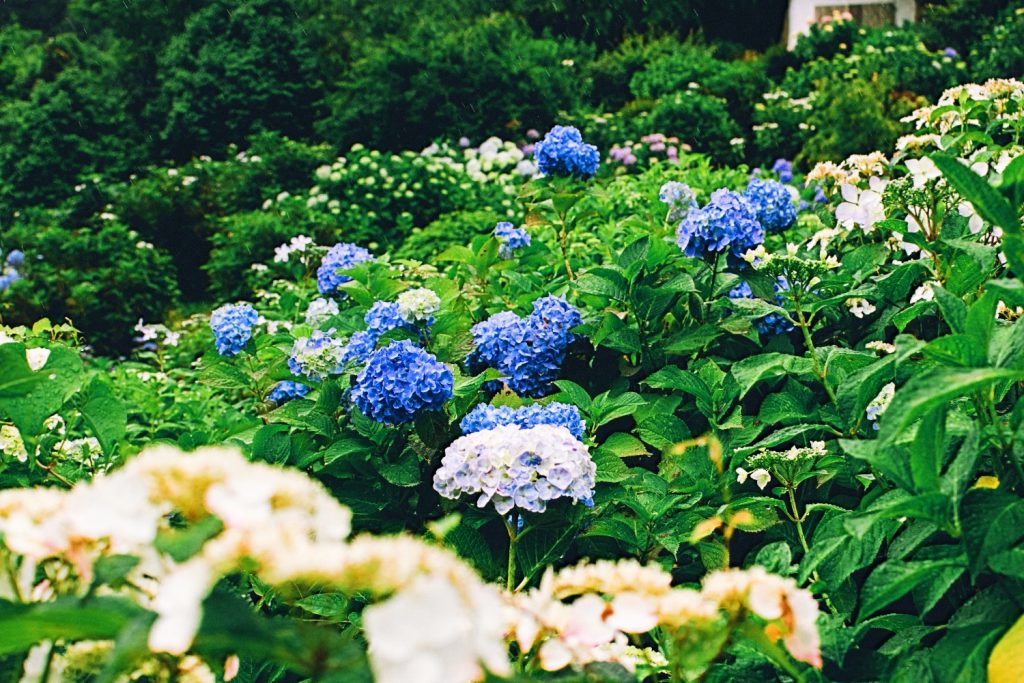
Will a hydrangea’s yellow leaves turn green again?
Once a leaf has turned yellow, it probably won’t turn green again, and that doesn’t just go for hydrangeas, that goes for nearly all plants. While yellow leaves may be unsightly, they still help the plant photosynthesize. If the majority of your hydrangea is yellow, refrain from trimming the leaves away. But if the plant only has one or two yellow leaves, it’s safe to snip them off if you like.
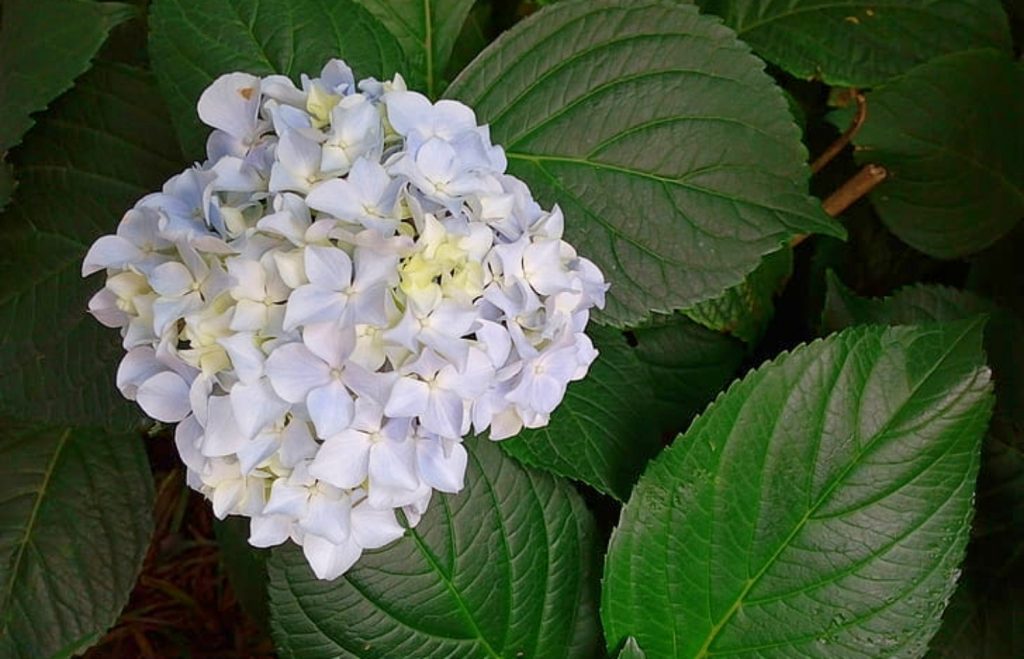
What’s the best way to prevent hydrangeas from developing yellow leaves?
The best way to promote healthy green growth is to meet all of your hydrangea’s growing requirements. Plant your hydrangea in loose, loamy soil that’s chock-full of decaying organic materials. Amend the soil as necessary to ensure good drainage. Keep the plant where it can get 4 to 6 hours of sunlight every day, and water it three times a week.
By meeting your hydrangea’s basic care requirements, you’ll be doing everything you can to prevent it from developing yellow leaves.
